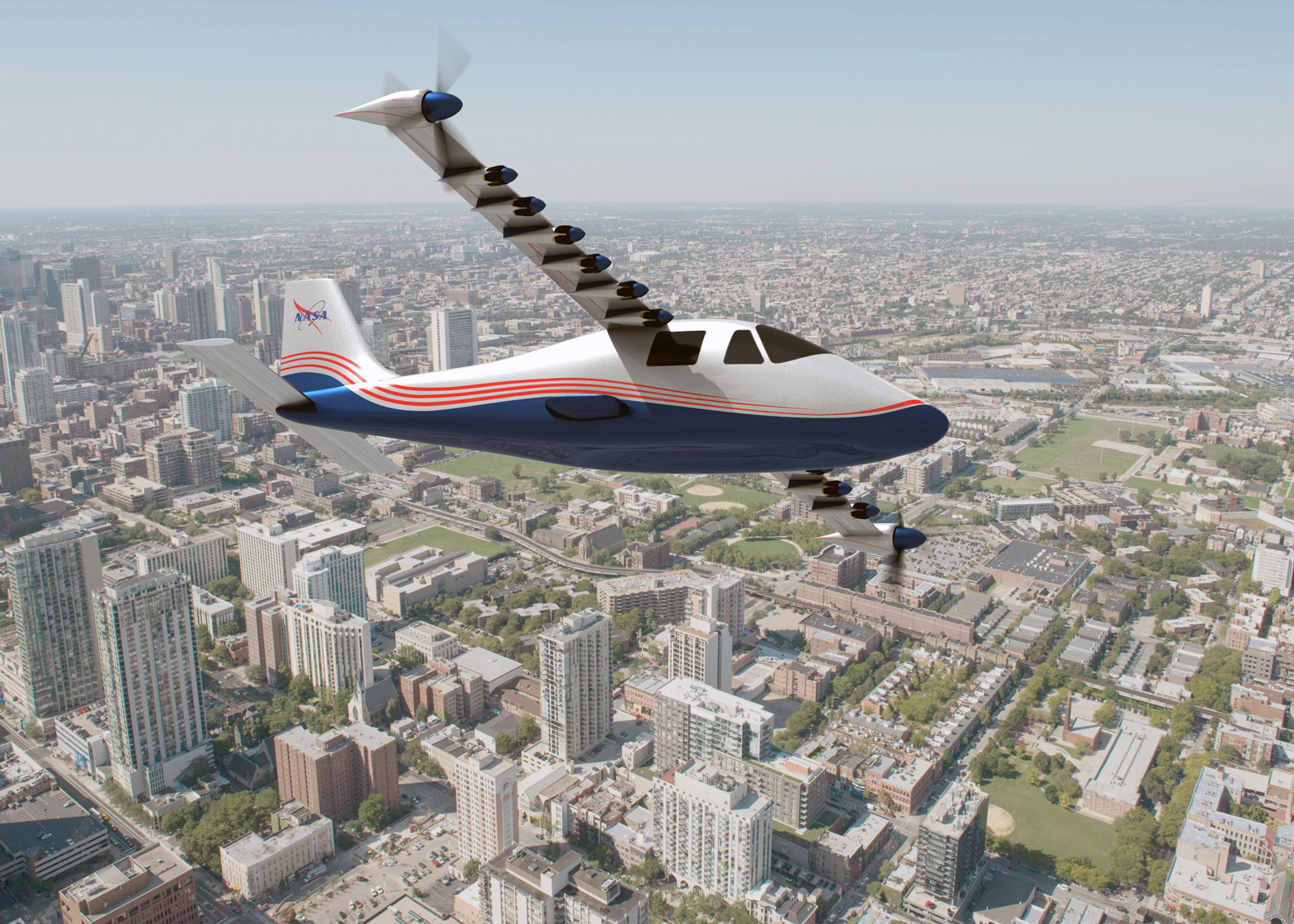Advances in electric motors could see jet aeroplanes replaced by battery-powered craft and usher in a new era of personalised electric flying machines, according to transportation designer Paul Priestman.
The designer said that electric passenger planes are now a possibility and added that the rise of drones pointed to new types of aircraft for individuals.
"We've got these electric drones flying around everywhere," he said. "[Electric planes are] just a scaled up version really. I think that's going to get really interesting – it could be the beginning of personalised transportation."
"It's like going back to the idea of jetpacks, but with lots of little drones," he added.
Priestman, co-founder of London transport design studio PriestmanGoode, said that aircraft in future could be powered by multiple rotors and resemble scaled-up drones.
"If you pick up one of these little drones, it's amazing how heavy they are,” he told Dezeen, referring to the large amount of lift the tiny rotors are able to generate.
Instead of being powered by a few, huge engines like jet aircraft, electric planes could feature dozens of motors working in teams, he suggested.
Electric aircraft would be far quieter and less polluting than today's fuel-burning planes. A shift to electric power would mirror the car industry, where battery-powered vehicles by brands including Tesla are gaining ground.
Once airborne, battery-powered motors could easily power long-distance passenger flights, Priestman predicted. Solar panels mounted on the wings and fuselage could boost electric power in flight, reducing the battery load.
The problem is getting the aircraft airborne in the first place, he said, since this takes a lot of power.
"Most of the energy is required to take off, so once you're off the ground you can start to glide and you use a fraction of the energy to move, like a glider," he said.
"Then of course coming down is the easy bit. It's the getting up, the taking off."
Priestman speculated that new ways to launch aircraft would have to be developed. Options include using launch devices that remain on the ground after the plane takes off, or lifting the craft to high altitudes with balloons.
"I think there are lots of ways of getting people off the ground, and once you're up into less atmosphere there is less friction and you can go further [with battery power]," he said.
Another option is the "tiltrotor" vehicle type, which takes off vertically like a helicopter and then morphs into a winged aircraft.
In 2013 helicopter manufacturer AugustaWestland unveiled Project Zero, a concept for a tiltrotor heli-plane, which features two electric rotors that swing to create vertical thrust for take-off and horizontal thrust for cruising.
"The blades actually rotate in the wings and it becomes an aeroplane," said Priestman. "Once it becomes an aeroplane, you need much less energy to fly."
Electric tilt-rotor vehicles promise to be faster and have a longer range than traditional helicopters. However more efficient battery technology is required before they become viable.
Interest in electric aeroplanes is increasing. Earlier this year aircraft manufacturer Aurora unveiled an unmanned, electric vertical take-off and landing (VTOL) vehicle developed for military use.
NASA is testing an experimental battery-powered aeroplane called the X-57, which features 14 electric motors positioned along its wings.
All 14 motors are used for take-off, while only two – positioned at the wing tips – are required for cruising.
NASA believes that electric planes powered by rechargeable batteries could fly faster and operate more cheaply than jet-powered aircraft.
Several proposals for personalised airborne transport based on drone technology have also emerged recently. Chinese manufacturer Ehang recently unveiled a concept for a passenger-carrying electric drone.
In 2013 pop star Lady Gaga launched her album Artpop while strapped into a flying dress powered by six electric rotors.

